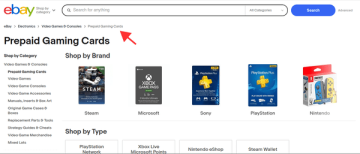Home Blog SEO Services Breadcrumbs 101: The Essential Guide to Boosting Your SEO
Breadcrumbs 101: The Essential Guide to Boosting Your SEO
- 30 Aug / 2024
- 936 views
- 8 Min Read

Breadcrumbs are essential navigational tools that can guide users through a website. SEO service providers prioritise it because of its ability to improve the user experience and SEO performance. These small navigational tools provide a clear path, reduce bounce rates, enhance internal linking, and improve crawlability by search engines. Following breadcrumbs best practices can significantly boost your site’s search rankings. Prioritising breadcrumbs is a smart strategy to boost your site’s visibility, engagement, and conversion rate.
Have you ever felt lost in a giant online store or a complex website? It’s one of those frustrating experiences that can quickly drive visitors away. This is where breadcrumbs seem to be the saviour.
Maybe you are not familiar with the term! Don’t worry; we will break it down for easy understanding. Can you remember the childhood fairy tale of Hansel and Gretel, who left a trail of breadcrumbs to find their way back home? Website breadcrumbs also work in a similar way. Now, when it comes to why it matters, Improving a site’s navigation is a key part of a successful SEO strategy. An efficient SEO service provider understands the importance of the user experience and can help you implement breadcrumbs effectively.
So, What Exactly Are Breadcrumbs?
Breadcrumbs are present on almost all well-designed websites. They help users figure out where they are currently on your website and also assist Google in understanding the overall structure of your site.
Breadcrumbs generally appear at the top of a web page and show a trail from the homepage to the current page. Using this trail, users can easily trace their steps back to previous pages or jump to a certain category.
Here is an example of breadcrumbs from the eBay website:

There are three primary types of breadcrumbs, such as:
Location-based breadcrumbs
They display the website’s hierarchy, from the homepage to the current page. For example: Home > Blog > SEO Tips
Attribute-Based Breadcrumbs
These are frequently seen on eCommerce websites, showing the product’s attributes that are being viewed. Example: Home > Electronics > Mobile Phones > Android > Samsung can be displayed as the Electronics category, Mobile Phones subcategory, Android sub-subcategory, and Samsung sub-sub-category.
Path-Based Breadcrumbs
They show the route the user followed to reach the current page. Example: Home > Blog > Previous Article > Current Article.
Why Do Breadcrumbs Matter in SEO?
Experts agree that breadcrumbs are essential to improving both the user experience and search engine optimization. Here are some reasons why leading SEO service providers incorporate breadcrumbs into their strategies:
Google Loves Them
Your visitors love breadcrumbs as well as Google. It helps Google and other search engines understand what your website is about and how it’s structured. Google uses breadcrumbs as a way to crawl your content and improve search results, making your results more enticing to users.
Improved Crawlability and Indexing
Google and other search engines use automated bots to browse and categorise web pages. Breadcrumbs serve as a structured guide for these bots, facilitating their comprehension of page hierarchy and interconnections.
This structure can enhance the crawlability of your website and simplify indexing for search engines. Breadcrumbs tend to show up more often on SERPs, offering users a better understanding and increasing the appeal of your listing. This visibility might result in improved organic rankings, which is a good sign for search engines too.
They Improve User user experience.
You know that people hate being lost. When in a new location, people often search for recognisable landmarks; the same is also true for websites. You should keep your website users satisfied and reduce friction as much as possible. Breadcrumbs can help in this aspect of enhancing the user experience since they are an effective interface element that provides an instant way out for users. People don’t need to hit the back button every now and then and get confused after a while!
SEO Benefits Through Internal Linking
Breadcrumbs create internal links on your website. Internal linking is a powerful SEO strategy that helps distribute link equity across your site, thereby increasing the SEO value of various pages. By linking to top-ranking pages, blogs ensure that relevant category or product pages get the link juice they need, improving their chances of ranking higher in search results.
According to a Moz study, internal links can improve a page’s position in search results. By using breadcrumbs as part of your internal linking strategy, you can improve the overall SEO performance of your site.
Reduced Bounce Rate
A high bounce rate may spoil all your SEO efforts. A high bounce rate signifies that visitors do not consider the web content on your site to be useful or related to what they are looking for. Breadcrumbs can assist in reducing this bounce rate by offering an effortless and direct method of returning to previous pages. Users can sometimes become lost when browsing a website, but breadcrumbs assist them in swiftly returning to the correct path and completing their desired action, like adding an item to the cart or wishlist.
Having a clear browsing path encourages users to explore other sections of a website instead of just leaving. Thus, it can increase engagement and send positive signals to search engines, which can improve your website’s ranking over time.
Breadcrumbs Best Practices
In order to maximise the benefits of breadcrumbs, SEO experts prefer following the best practices for smooth implementation. Here are some best practices that experts at Webguru Infosystems follow–
Use Clear and Descriptive Labels
Breadcrumb labels should be concise and descriptive. These must convey a clear idea of what they will find on each page of your website. Avoid using generic terms like “page 1” or “category.” It’s more sensible to use terms like “SEO services” or “Web design services.”.
Keep Them Consistent Across the Site
Consistency matters in terms of breadcrumbs. You should implement them uniformly across your site to ensure a seamless experience for all your visitors. The breadcrumb trail should reflect the correct hierarchy, and this structure needs to be consistent from page to page.
Make Breadcrumbs Clickable
Each part of the breadcrumb should be clickable so that users can easily navigate back to any previous page. Such a feature or functionality can enhance the user experience and encourage further exploration of your site.
Place Breadcrumbs at the Top
Experts prefer placing breadcrumbs at the top of your web page, below the main navigation bar. It should be properly visible, understandable to users, and accessible without having to scroll down the page.
Integrate Breadcrumbs with Schema Markup
To optimise SEO advantages, consider integrating breadcrumbs with schema markup. Schema markup helps search engines understand the organisation of your website, leading to an improved display of breadcrumbs in SERPs. This increased visibility can potentially boost click-through rates and enhance overall SEO performance.
Difficulties with Breadcrumbs Implementation
Although using breadcrumbs has several advantages, there are some drawbacks as well:
Design-Based Integration
Especially for mobile versions, it might be challenging to include breadcrumbs into your site’s design without making the UI look cluttered.
Sustaining Proprecency
It might be difficult to maintain accurate and current breadcrumbs on large, dynamic websites.
Juggling User Experience and SEO
Although keyword-rich breadcrumbs might help with search engine optimisation, it’s important to make sure they stay user-friendly and not overly optimised.
Considering the popularity of mobile browsing, it’s critical to take into account how breadcrumbs work on smaller screens. Since mobile users typically have small screens, it’s essential that you keep breadcrumbs clear and simple to use. By using responsive design strategies, one can improve the mobile user experience by ensuring that breadcrumbs are shown properly on smaller devices.
Additionally, mobile-friendly breadcrumbs can increase visitor engagement and decrease bounce rates—two important aspects of mobile SEO.
Conclusion
Breadcrumbs are an essential part of any successful SEO strategy. Breadcrumbs have a big impact on your website’s SEO performance since they improve internal linking, user experience, and site structure. According to leading SEO service providers, using breadcrumbs is an excellent start if you’re trying to get greater online visibility.
It may seem like a small thing, but breadcrumbs can make a significant difference and help you stay ahead of the competition. So, do not underestimate this straightforward yet effective instrument for SEO services; it might be the key to the success of your website.

Sujata Bhattacharjee
Sujata Bhattacharjee is a versatile content writer with a passion for crafting engaging narratives. Her work blends creativity with expertise, captivating readers across diverse topics effortlessly.
1 comment
Leave a Reply

-
1000+
Happy
Clients -
25+
Countries
Served -
19+
Years of
Trust







Good article.